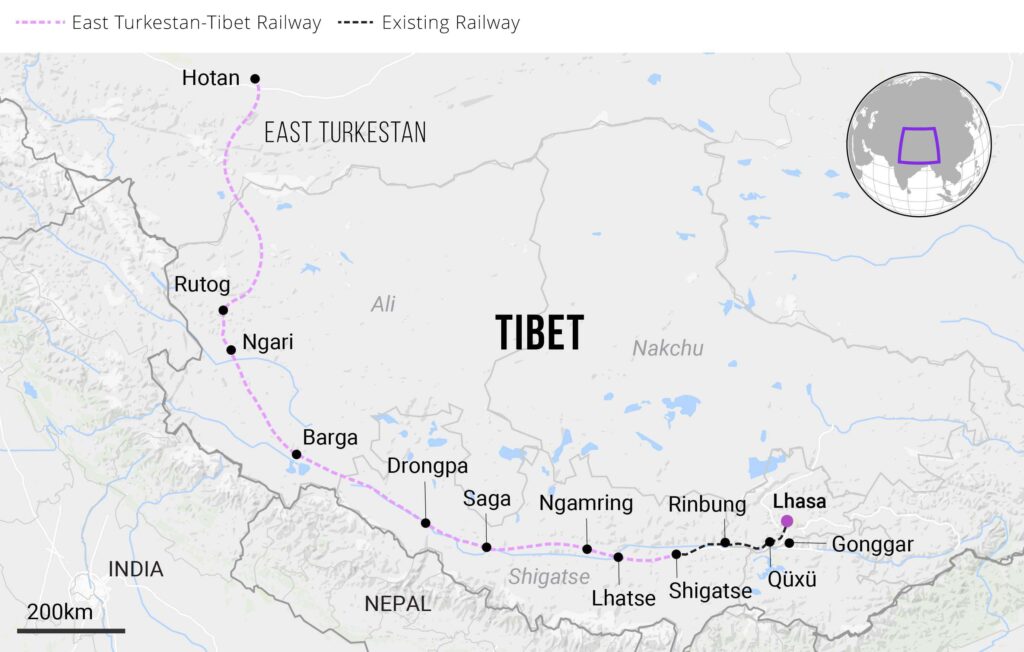(TibetanReview.net, Aug11’25) – The Xinjiang–Tibet Railway which China plans to begin building this year is among 45 major projects outlined in China’s Ministry of Transport’s 2025 Plan for Major Projects in Building China into a Transport Powerhouse, reported China’s official chinadaily.com.cn Aug 10, citing a ministry release in February.
The report noted that speaking at a news conference in April, Jin Jingdong, deputy director of the ministry’s Comprehensive Planning Department, said preliminary work on the railway was being accelerated, with construction targeted to begin within the year.
Initial surveying for the railway was stated to have been completed, with preparatory work proceeding apace.
For carrying out the project, the Xinjiang–Xizang Railway Co Ltd was established on Aug 7, marking a significant step in the development of one of China’s most advanced transport projects, the report said.
Based in Tibet’s capital Lhasa, the company has a registered capital of 95 billion yuan ($13.22 billion) and is primarily engaged in railway transportation. Its business scope is stated to cover construction and engineering supervision, railway infrastructure manufacturing, public railway operations, as well as services in catering, accommodation, real estate development, and tourism.
China State Railway Group is stated to be the sole corporate shareholder of the new company.

The new railway will run between Hotan in East Turkestan (Xinjiang) and Shigatse and Lhasa in Tibet. It will pass closely by China’s disputed Tibet-border with India and is seen as of strategic importance, apart from being an enormous engineering challenge.
Using the Sinicized name “Xizang” for Tibet Autonomous Region, the report said the Xinjiang–Tibet Railway will form part of China’s five planned railway corridors into Xizang — alongside the completed Qinghai–Xizang Railway, the under-construction Sichuan–Xizang Railway and planned Gansu–Xizang and Yunnan–Xizang railways.
The report said that once completed, the new railway will serve as a key artery linking “China’s northwest and southwest regions”, playing a vital role in enhancing economic, cultural, and tourism exchanges between Xinjiang and Xizang.


